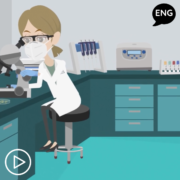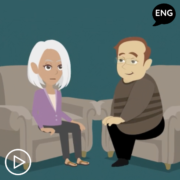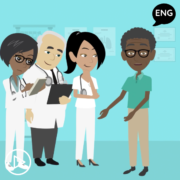The Benefits of Shared Decision-Making for Myeloma Care
The Benefits of Shared Decision-Making for Myeloma Care from Patient Empowerment Network on Vimeo.
Why is working WITH your myeloma care team to determine a treatment plan so important? Dr. Sikander Ailawadhi reviews the benefits of the concept of shared decision-making and explains how myeloma treatment goals affect a patient’s care plan.
Dr. Sikander Ailawadhi is a hematologist and oncologist specializing in myeloma at Mayo Clinic in Jacksonville, Florida. Learn more about Dr. Ailawadhi.
Related Resources:

|

Key Advice for Myeloma Patients | Questions to Ask About a Care Plan |

Available Myeloma Treatment Options for Patients | An Overview |
Transcript:
Katherine:
So, when it comes to choosing therapy for myeloma, it’s important to work with your healthcare team to identify what might be best for you. How would you define shared decision-making and why is this so critical to properly managing life with myeloma?
Dr. Ailawadhi:
Excellent question, Katherine. Shared decision-making or a process in which the physician, the health care team, and the patient, their caregivers, everybody comes together, shared, to make a decision that we feel is in the best interest for that patient at that time. That is the whole concept.
Whenever we think about treatment decisions, in our mind, the three main components that have to be considered every single time. Not just newly diagnosed or relapsed or third line or whatever, every single time a treatment decision has been taken, we must consider patient-related factors. What is their preference? What are their goals? Do they have caregiver support? How far do they live? Do they want IV? Pills? Any side effects that are there?
Comorbidities? Other issues? Financial conditions? Everything comes into play, patient-related factors. Then, there are disease-related factors. How fast is the disease growing? Is this new? Is this old disease, high-risk, low-risk, or standard risk? Or what has been given before, et cetera. So, patient and disease-related. And the number three is the treatment-related factors. What is being considered for the patient? What are the ins and outs, pros, and cons?
All of this has to be laid out in front of the patient and preferably also their caregiver if the patient has someone who they can share their decision with.
And when we put all of that in the mix, we come up with a decision which is hopefully in the patient’s best interest. They are more likely to go through with it. They are informed. They are involved in their care. And then, hopefully, if the patient starts on a treatment that they are interested in, knowledgeable about, and committed to, we’ll be able to keep the patient on that longer term and get the best benefit out of it.
So, in my mind, the main reason for shared decision-making is to make sure my patient is committed to that treatment. They understand that treatment. And we make this kind of bond between us as clinicians and our teams and the patient and their home team, their family team, their caregiver team so that everybody is working together with a singular goal. Right treatment for the right patient at the right time because it must be patient-centric, not research or clinician, or drug-centric.
Katherine:
What are myeloma treatment goals, and how are they determined?
Dr. Ailawadhi:
So, I think the myeloma treatment goals can be very different depending on what vantage points you’re looking from. My treatment goal is to provide the best treatment for my patient that has least side effects, gets a deep control, and my patient’s able to live long with a good quality of life. Okay. But that’s my goal. I need to figure out what my patient’s goals are, and sometimes our patient’s goals are very different. A patient’s goal might be that they want to really avoid side effects. Well, they want to live, lead their quality of life, and keep traveling. And this happens on a day-to-day basis.
Just the other day, one of the patients said, “Well, I really want to keep driving around in my RV with my wife, because that is what we had wanted to do at this point of our life. What can you do to help me control my disease, but keep me driving my RV?” And we literally had to figure out where all they were traveling. We identified clinics close to them and connected with physicians so that they could continue their treatment wherever they were. So, the patient’s goals are very important, and in fact, I would say they are paramount. So, understanding what the patient wants. They may be wanting to control pain. They may be wanting to just live longer.
They may be wanting to delay treatment so that they could watch their daughter’s soccer game. I’m just saying that the goals can be very different. It is important to lay them out. Every time you’re making a treatment decision, the goals should be laid out into short-, mid-, and long-term goals. I should bring my goals to the discussion. The patient should bring their goals to the discussion, and we come up with whatever is the best answer for them that suits them.




















